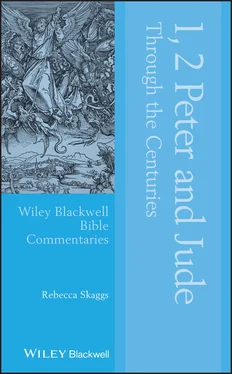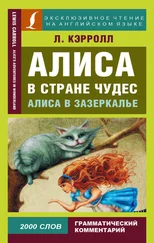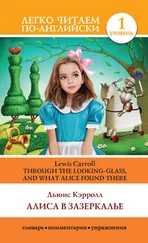Didymus the Blind(c.313–398), an Alexandrian exegete who was influenced by Origen and was admired by Jerome, is probably the next of the earliest to have written a full commentary on all of the seven epistles, but they only exist in a Latin translation. However, surviving Greek fragments suggest that they represent a “reasonably faithful rendition of the original” (Bray, 2000). These writings are apparently a primary source of most if not all of the later Greek commentaries on the Catholic epistles, reflecting the strong exegesis of his Alexandrian predecessors (Bray, 2000; Jones, 2001: 4–5). Jones makes much of this material more readily available in translation.
After this, a number of writers took selections from the commentary of Didymus along with excerpts from other writers, and linked them together to form a “catena” (Bray, 2000). The earliest catena is attributed to Andreas, a seventh‐century monk. Some of his sources can be identified from existing documents, for example Ammonius of Alexandria (fifth century), Eusebius of Emesa (c.300–359), Hesychus of Jerusalem (fifth century), Severus of Antioch (c.465–538), and Maximus the Confessor (580–662). However, speculation continues as to exactly how much of the remaining commentary is actually his or what might be from another lost work. In any case, whatever sources he used certainly predate himself, so that his commentary represents ideas existent at this early time. Later, John Anthony Cramer, in 1838–1844, during his years at Oxford, undertook the task of compiling the Patristic texts on the seven epistles. The volume on Jude is the final of his eight‐volume works and is the primary concern of Jones (2001, see pp. 5–6 for a complete description of his project). He has gathered and translated this material, some of which was not available before. The material, along with that of Clement of Alexandria’s work on Jude, reflects writings which date as early as the ninth to tenth centuries (Jones, 2001: 6).
After this, the first full Latin commentary on 1 Peter was by Hilary of Arles(403–448). This document became an important source for later writers such as Gregory the Great (d. 604). Although Gregory himself did not write a commentary on Peter, his notes were collected by his secretary Palerius and circulated as a sort of catena (Bray, 2000: xxvi). In the twelfth century, Alulfus, a French monk, imitated and elaborated on this document.
Oecumenius, sixth‐century philosopher and orator (not to be mistaken for Oecumenius, bishop of Tricca), possibly also wrote catenae, but like Andreas it is debated whether or how much is actually his contribution. Theophylact of Ohrid, Byzantine archbishop of Bulgaria (c.1050–1108), was one of the leading commentators of his day and is also thought to have compiled catenae. All of these show dependence on earlier sources as well as the influence of Didymus the Blind.
In the Latin world the catenae date to a later time. Both Augustine (354–450) and Jerome (347–420) often refer to 1 Peter as well as to most of the other Catholic epistles in letters or sermons but neither wrote a full commentary on them. Nevertheless, these readings are noteworthy since these writers have played such significant roles in shaping later theology.
The greatest of the early Latin commentators on the Catholic epistles was Bede the Venerable(672–735). His extensive knowledge of history, geography, and etymology was nearly encyclopedic; going beyond mere exegesis to also include pastoral instruction, he combines exegesis, theology, and practical application so that, according to Bray, he may have even influenced the later Anglo‐Saxton tradition of spiritual reading (2000: xxviii; see also Jones, 2001: 8–9). The ninth‐century Nestorian Isho’dad(c.850) also has written on our epistles but states that he regards only the three core books (James, 1 Peter, and 1 John) as canonical but not authentic (Bray, 2000). This clearly implies that he rejects both Jude and 2 Peter, possibly on account of Jude’s use of the apocrypha which was beginning to be more seriously challenged at this time.
Other than this, there are no full‐length commentaries on our three epistles in this era except for Theophylact (1050–1108). However, all of them are mentioned by various people who are engaged in the controversies at this time, for example, Grotius, Melanchthon, and Erasmus. St. Francis of Sales refers to them occasionally and Thomas Aquinas often cites both of the Peters in his treatments of various theological issues. He does not refer to or cite Jude. Significantly, all three of them are used in many church creeds, confessions, and constitutions of this era, indicating their perceived place in the church. Many new denominations were being formed on account of the impact of the various reformations, so that it is noteworthy that these little texts did have a role to play in the development of the various church documents. In short, we can conclude that, at this time, they were generally accepted for use in the churches and also were used in the discussions and controversies, particularly in the case of 1, 2 Peter regarding Christology, inspiration and authority of scripture, the foreknowledge of God, and the final judgment.
Of course, the time of the Reformation is well represented by Martin Lutherand John Calvin, both with full‐length commentaries on all three of these epistles, contained in one volume. Whenever possible, other figures of the time such as Arminius, and pastors Matthew Poole, Thomas Watson, and Thomas Vincent, will be included when relevant material is available. These pastors infer that especially the Peters were used in sermons to address such issues as suffering, persecution, and whether or not salvation can be lost. Again major controversies were being debated and discussed both in councils and sessions at the universities. These included scholars, theologians, and pastors who engaged with Luther, Zwingli, and others in the development of theology and doctrine. Later, in the sixteenth and seventeenth centuries, theologian John Bengel and others such as pastor and scholar John Wesley inform our understanding. From this time until the modern era with its restored interest in 1 Peter, the doubts and challenges regarding the authenticity and canonicity of all the Catholic epistles continue to linger. It should be noted, however, as already stated, all three texts are used by church creeds, constitutions, and confessions of this time (see Commentary section for details), so that, taken together, we can derive from these sources a good idea of the reception of our texts.
Although this series is not primarily interested in the discussions of current scholarship, I am including a selection of current theories when they show a continuity or relation to a topic discussed by the ancient writers or when they present a unique or interesting perspective (see Appendix 2for list of ancient writers). The main scholars on 1 Peter will be Bigg (1961), Selwyn (1958), Michaels (1988), Goppelt (1993), Elliott (1981), Martin (1992), and Green (2007) bring the distinctive perspective of the social sciences; for current research, see Reading First Peter with New Eyes (Webb and Bauman‐Martin, 2007). Of course, additional relevant materials on issues such as slavery, women, and the harrowing of hell will be taken into account. On Jude and 2 Peter, significant modern works are Bauckham (1983), Neyrey (1993), and Reading Jude with New Eyes (Webb and Davids, 2008) and Reading Second Peter with New Eyes (Webb and Watson, 2010).
It is appropriate to include a brief overview of some significant modern dialogs since they provide distinctive perspectives on how the epistles are currently being read. This information is distinctive for each of the epistles so each will have its own section except for the overlap between Jude and 2 Peter. Three specific discussions have shaped modern understanding of 1 Peter.
Читать дальше












